Mount Rainier transforms into a living kaleidoscope every summer when snow melts away to reveal spectacular wildflower meadows. These alpine gardens burst with color from late June, peaking in mid-July through early August, and continuing into early September, creating some of the most breathtaking displays in the Pacific Northwest. The mountain’s unique elevation zones and volcanic soil create perfect conditions for dozens of wildflower species to thrive in stunning harmony.
The timing varies each year depending on snowpack and weather conditions, but the peak season typically runs from mid-July to mid-August. Here is a list of 17 Mount Rainier wildflower meadows that showcase nature’s most impressive summer show.
Paradise
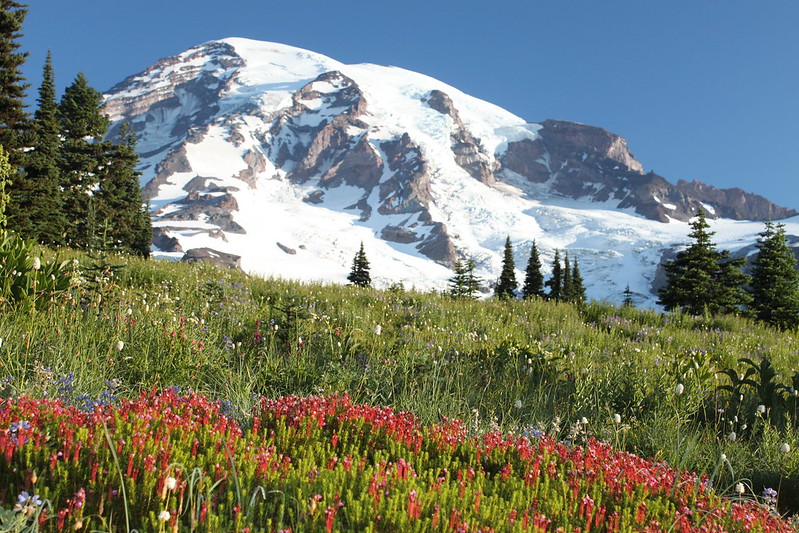
Paradise lives up to its name when wildflowers carpet the subalpine meadows around the visitor center. Indian paintbrush, lupine, and magenta shooting stars create a painter’s palette across rolling hills that seem to stretch endlessly toward the mountain’s glacier-covered summit. The area gets its spectacular display thanks to its southern exposure and relatively long growing season, which allows flowers to establish deep root systems before winter returns. Visitors can explore miles of well-maintained trails that wind through different flower communities, each adapted to specific microclimates and soil conditions.
Sunrise
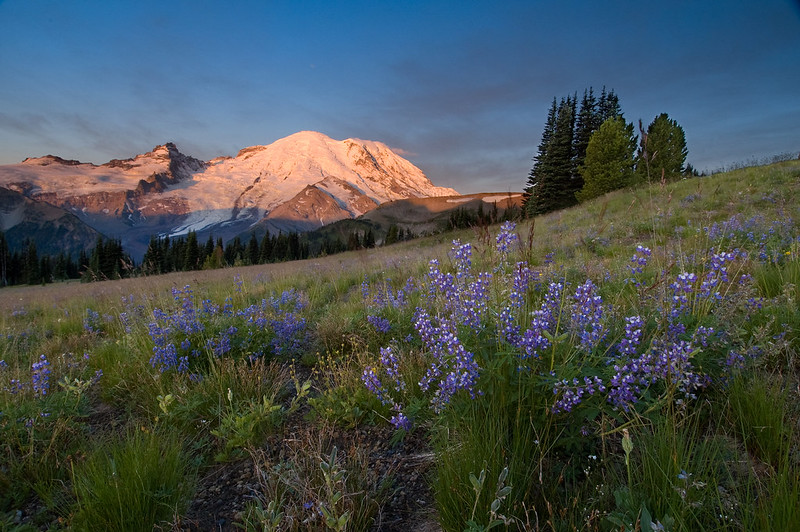
Located on the mountain’s northeast side, Sunrise offers the most expansive wildflower views in the park at 6,400 feet elevation. The meadows here feel like stepping into a high-altitude botanical garden where avalanche lilies emerge right after snowmelt, followed by waves of other species throughout the summer. This area receives less annual precipitation than Paradise, creating different growing conditions that favor drought-tolerant varieties like penstemon and beargrass. The combination of volcanic soil and intense UV radiation at this elevation produces flowers with particularly vibrant colors that seem almost artificial in their intensity.
Tolmie Peak
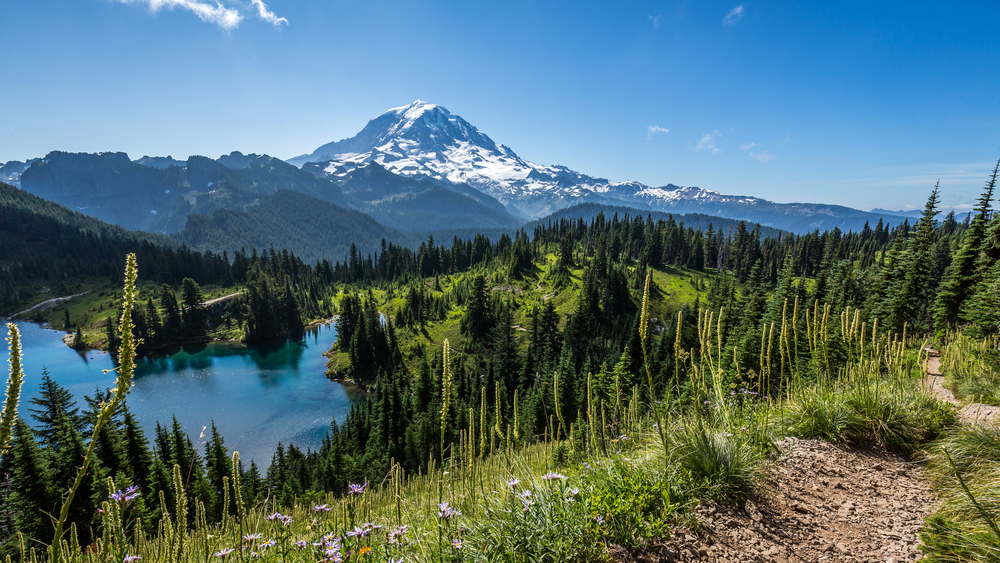
The trail to Tolmie Peak winds through some of the most diverse wildflower communities in the park, with each elevation gain revealing new species adapted to changing conditions. Early summer brings fields of white avalanche lilies that look like scattered stars across green meadows, while late summer showcases the deep purples of lupine and the brilliant reds of paintbrush. The hike covers about 6 miles round-trip, giving wildflower enthusiasts plenty of time to observe how different species cluster together in natural communities. Views of Mount Rainier from the peak provide the perfect backdrop for photographing the colorful meadows spread out below.
Spray Park
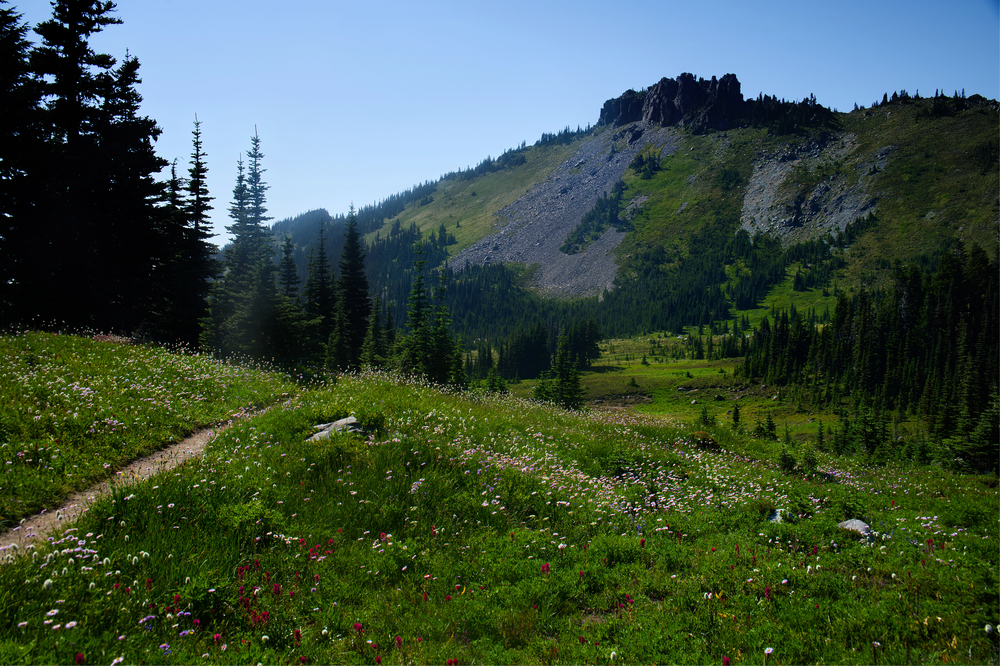
Spray Park earns its name from the mist created by waterfalls cascading down from glaciers above, creating ideal growing conditions for moisture-loving wildflowers. The combination of constant irrigation and rich volcanic soil produces some of the tallest and most robust flower displays in the park. Monkey flowers thrive in the wet areas, while drier slopes support massive stands of lupine that can grow waist-high in favorable years. The 7-mile round trip hike requires some effort, but the payoff includes views of flowers growing right up to the edges of glacial moraines.
Naches Peak Loop
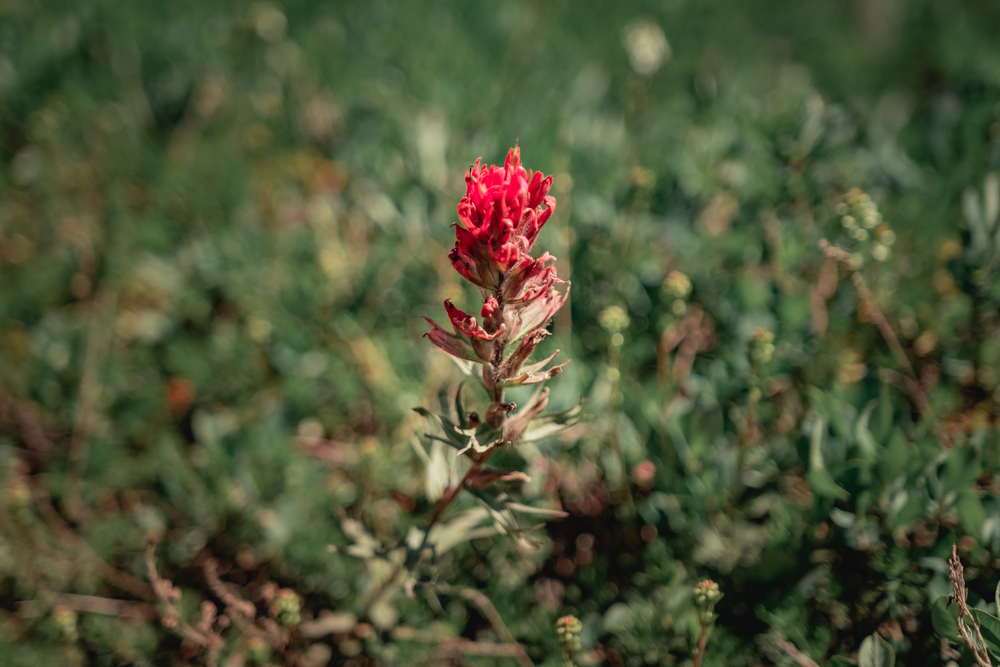
This relatively easy 3.5-mile loop trail showcases wildflowers in a more intimate setting than some of the park’s grander meadows. The trail stays mostly above treeline, allowing visitors to observe how different flower species adapt to exposed alpine conditions. Phlox creates purple carpets in protected areas, while hardier varieties like alpine aster cling to rocky outcrops where few other plants can survive. The loop format means you experience different wildflower communities as lighting conditions change throughout the day.
Panhandle Gap
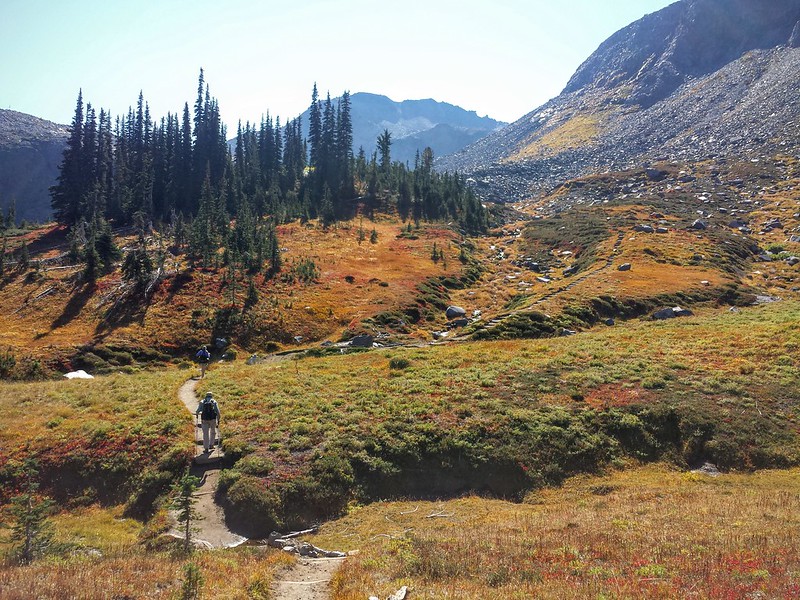
Panhandle Gap sits at 6,800 feet elevation, making it one of the highest wildflower destinations accessible by trail in the park. The short growing season here means flowers must work fast, creating intense bursts of color that can change dramatically from week to week. Alpine varieties dominate this harsh environment, with cushion plants and low-growing species that have adapted to fierce winds and temperature extremes. The 9-mile round-trip hike from Sunrise rewards experienced hikers with views of flowers growing in conditions that would kill most garden varieties.
Frozen Lake
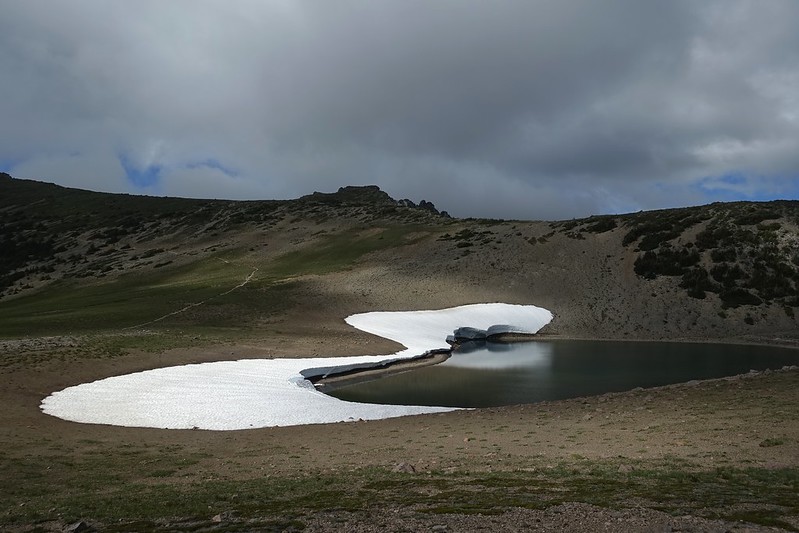
Despite its name, Frozen Lake becomes a wildflower paradise when the snow finally melts in late summer. The lake creates a microclimate that extends the growing season slightly, allowing some species to bloom later than in surrounding areas. Marsh marigolds and other moisture-loving plants thrive around the lake’s edges, while the surrounding slopes support more typical alpine varieties. The reflection of colorful flowers in the still water creates photo opportunities that look almost too perfect to be real.
Silver Falls
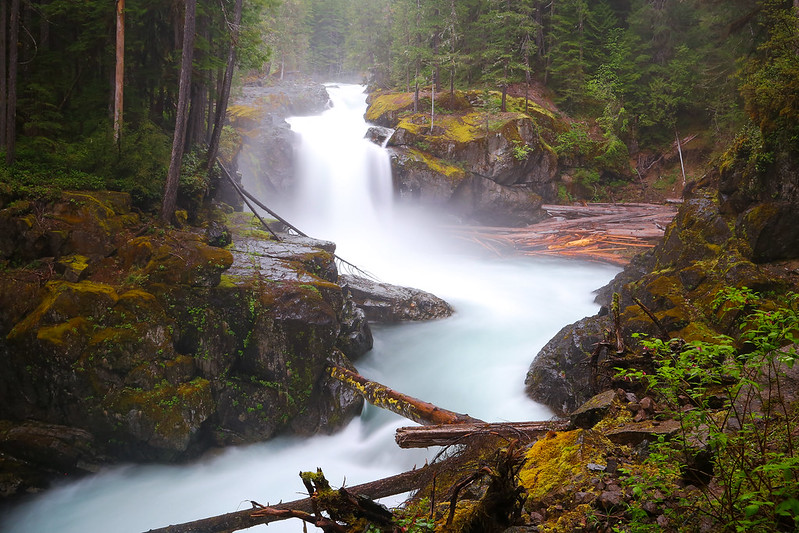
The trail to Silver Falls combines the spectacle of wildflowers with the drama of cascading water, creating one of the park’s most photographically rewarding destinations. Mist from the falls creates ideal conditions for delicate species that require consistent moisture, while nearby slopes support hardier varieties that can handle more typical alpine conditions. The 3-mile round-trip hike passes through several distinct plant communities, each adapted to different levels of moisture and sun exposure. Late summer visits often reveal the most diverse flower displays as different species hit their peak bloom times.
Burroughs Mountain
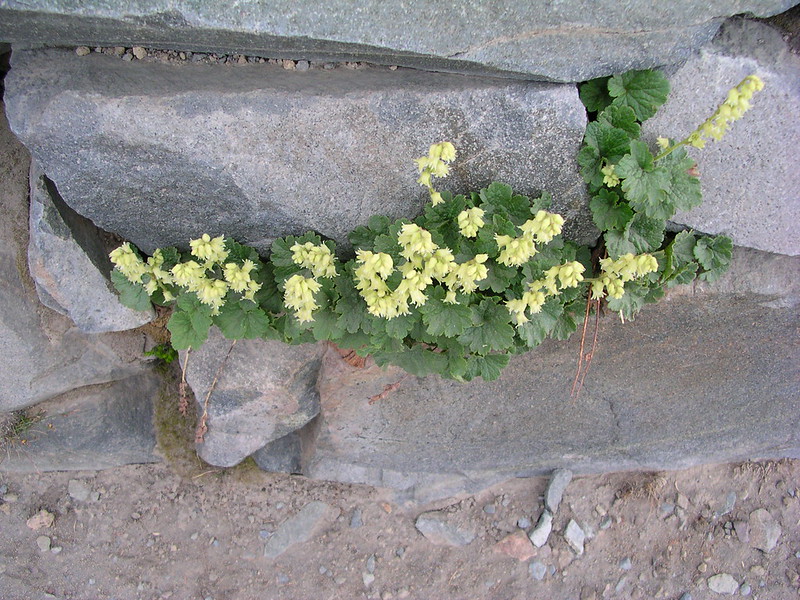
Burroughs Mountain offers three distinct peaks, each providing different perspectives on wildflower meadows spread across the alpine zone. The windswept ridges support specialized alpine plants that have evolved to handle extreme conditions, creating displays that are more subtle but no less impressive than lower elevation meadows. Moss campion forms bright pink cushions that look like living rocks, while other species grow in tight mats that conserve moisture and resist wind damage. The 7-mile round-trip hike requires good fitness but rewards visitors with 360-degree views of wildflower communities adapted to some of the harshest conditions in the park.
Summerland
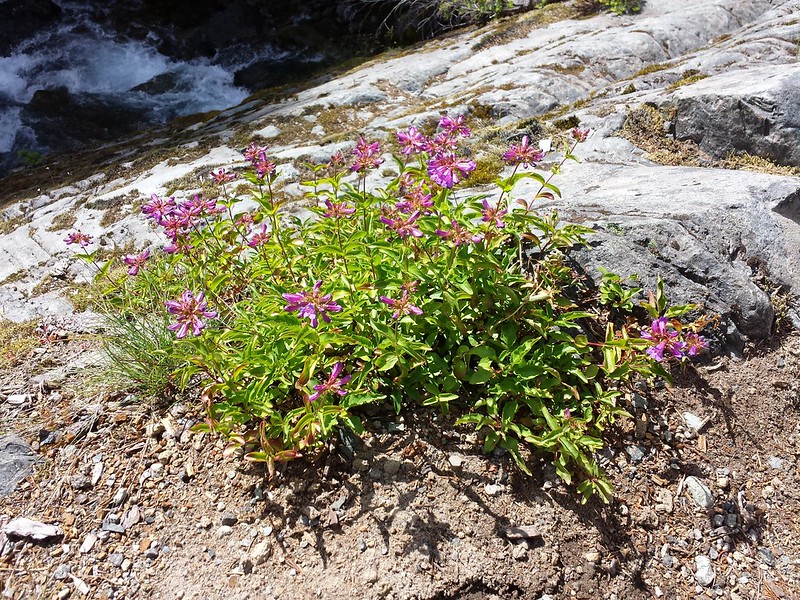
Summerland provides one of the most accessible high-elevation wildflower experiences in the park, with spectacular displays beginning just 2 miles from the trailhead. The meadows here transition gradually from forest to alpine zones, allowing visitors to observe how wildflower communities change with elevation and exposure. Lupine creates purple waves across gentle slopes, while Indian paintbrush adds splashes of red and orange that seem to glow in the alpine sunlight. The 8.5-mile round-trip to Panhandle Gap passes through multiple flower zones, each with its own character and seasonal timing.
Mystic Lake
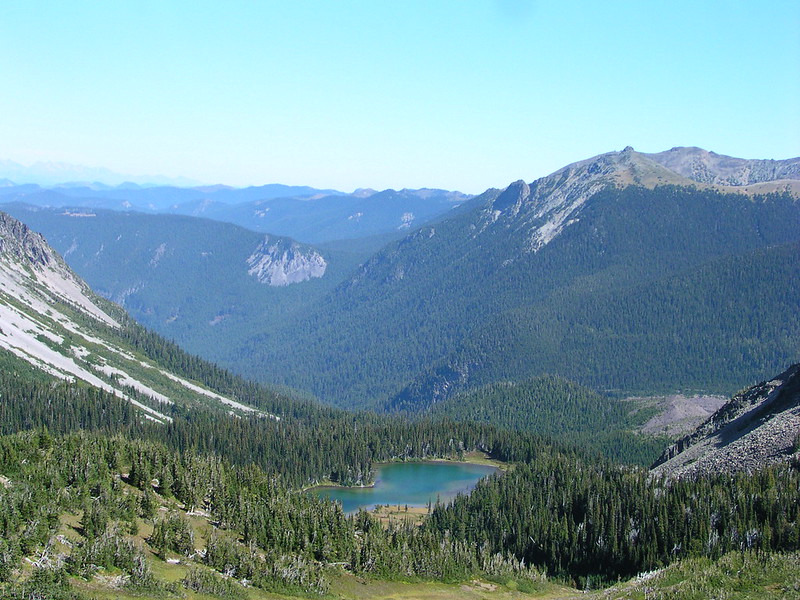
Mystic Lake sits in a glacial cirque that creates perfect conditions for wildflower growth, with snowmelt providing steady irrigation well into summer. The lake’s elevation of 5,700 feet means flowers here bloom slightly earlier than in higher meadows, making it a great destination for extended wildflower season visits. Shooting stars and glacier lilies dominate early season displays, while later summer brings out the lupine and paintbrush that have made Mount Rainier meadows famous. The 14-mile round-trip hike makes this a commitment, but the isolated location means smaller crowds and more pristine wildflower experiences.
Eunice Lake
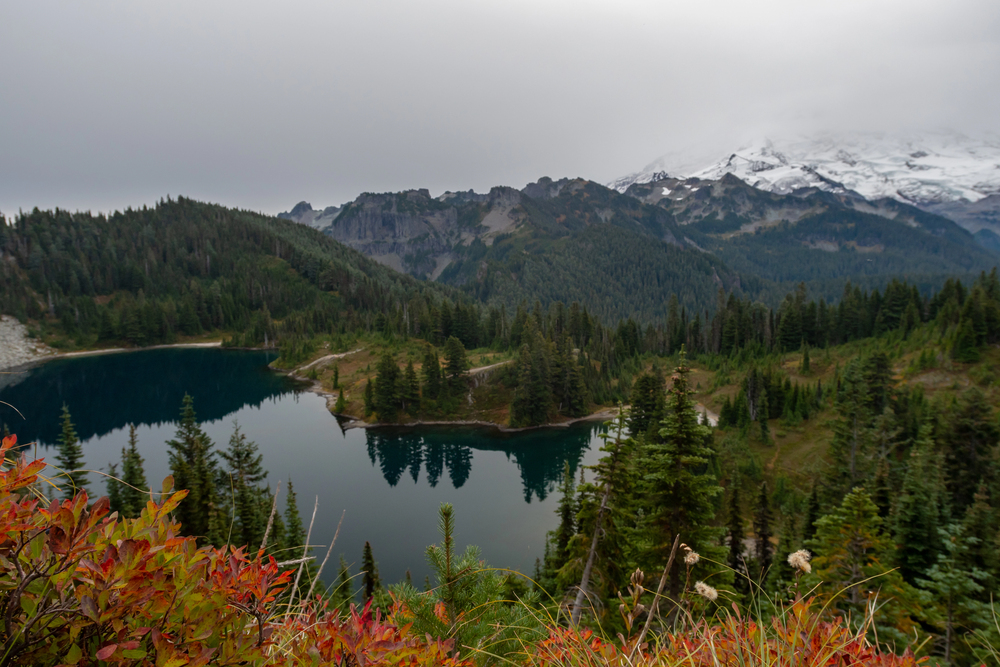
Eunice Lake offers wildflower enthusiasts a chance to see how different species adapt to north-facing slopes that receive less direct sunlight. The cooler conditions here extend the blooming season for some species while creating challenges for others, resulting in unique plant communities not found elsewhere in the park. Avalanche lilies often persist later into summer around the lake’s edges, while surrounding meadows support species that prefer cooler growing conditions. The 2.5-mile hike from Mowich Lake makes this one of the more accessible high-elevation wildflower destinations.
Comet Falls
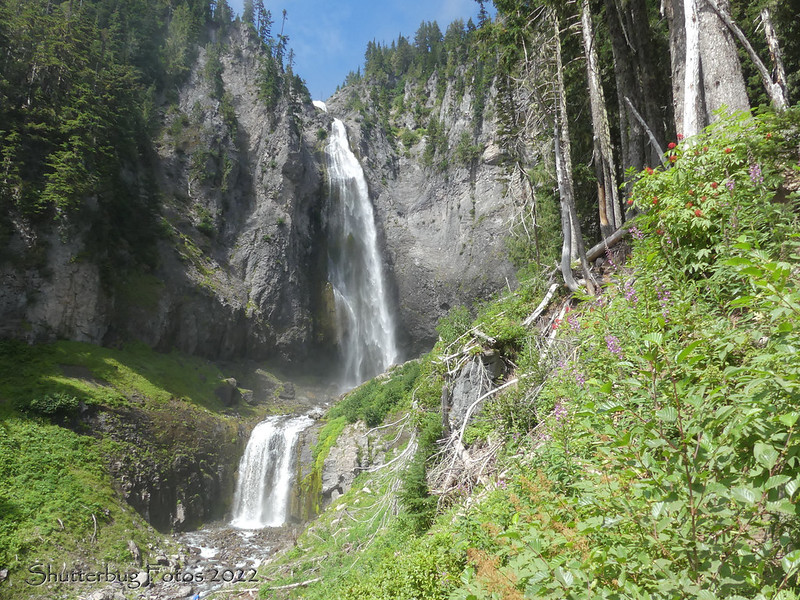
The trail to Comet Falls combines impressive waterfall views with excellent wildflower displays, particularly in the meadows above the falls. The constant mist creates ideal growing conditions for species that require consistent moisture, while drier areas support more typical alpine varieties. Monkey flowers and other moisture-loving plants thrive in the spray zones, creating lush green carpets dotted with bright yellow blooms. The 3.8-mile round-trip hike gains significant elevation, allowing visitors to experience different wildflower communities as conditions change from forest to alpine zones.
Mount Fremont Lookout
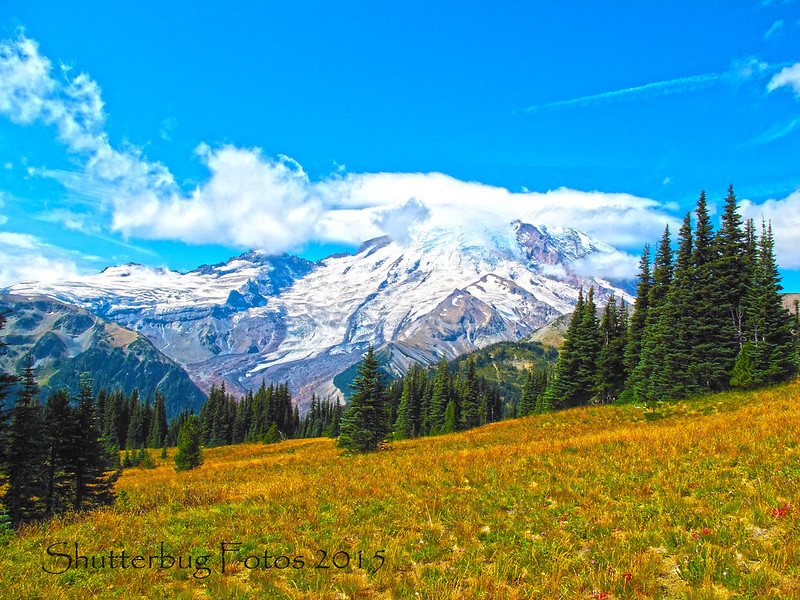
The trail to Mount Fremont Lookout passes through extensive wildflower meadows that showcase the diversity of alpine plant life in the park. The lookout’s 7,181-foot elevation provides panoramic views of flower-covered slopes stretching in all directions, creating a perspective that helps visitors understand how wildflower communities fit into the broader alpine ecosystem. Beargrass creates dramatic white spikes that can be seen from miles away, while smaller flowers form colorful carpets that shift and change as the season progresses. The 5.6-mile round-trip hike offers manageable elevation gain with spectacular payoffs for wildflower photography.
Plummer Peak
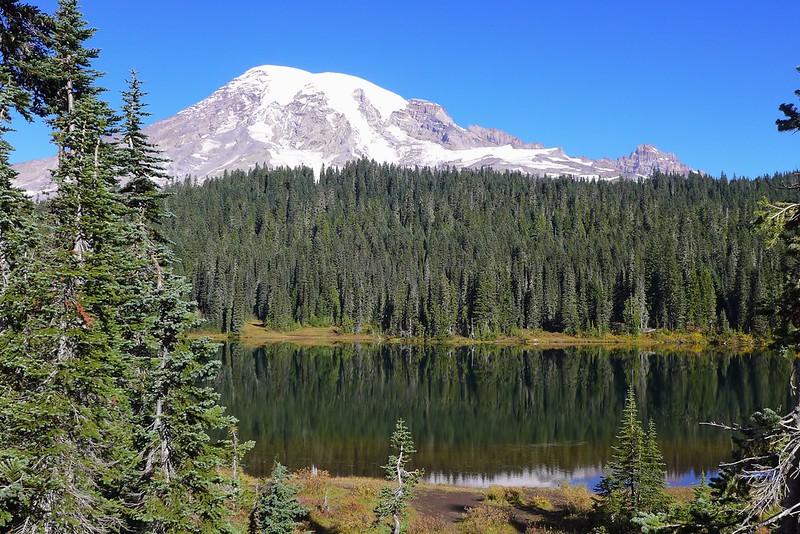
Plummer Peak provides access to wildflower meadows that see fewer visitors than some of the park’s more famous destinations, creating opportunities for more solitary flower viewing experiences. The peak’s location on the park’s western edge means it receives different weather patterns than eastern areas, supporting plant communities that have adapted to higher precipitation levels. Late summer visits often reveal the most diverse displays as different species reach peak bloom at varying times throughout the season. The challenging 7-mile round-trip hike rewards persistent visitors with pristine meadows and excellent mountain views.
Dege Peak
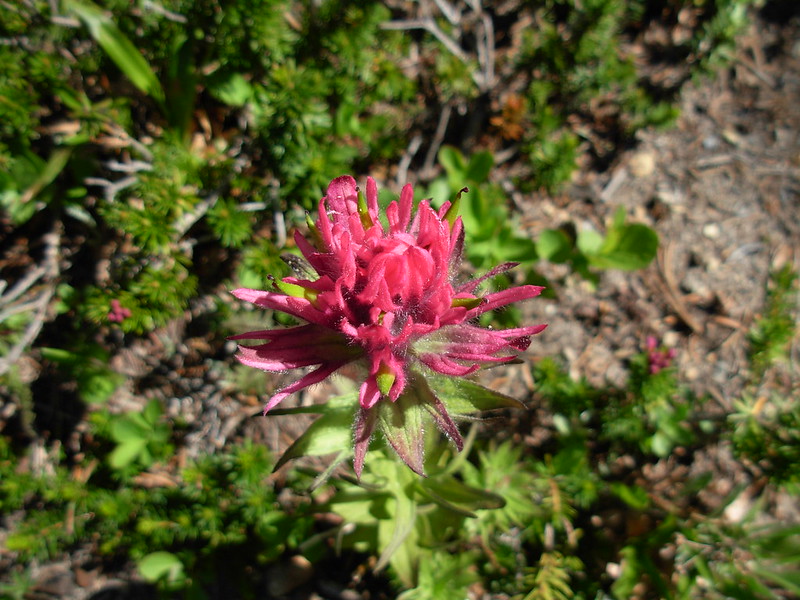
Dege Peak offers some of the most accessible high-elevation wildflower viewing in the park, with spectacular displays beginning just 1.2 miles from the Sunrise parking area. The peak’s 7,006-foot elevation puts it firmly in the alpine zone, where specialized plants have adapted to extreme conditions through compact growth forms and intense colors. Phlox creates purple carpets in protected areas, while hardier species like alpine buttercup add bright yellow accents to rocky slopes. The relatively short hike makes this an excellent choice for visitors who want to experience high-elevation wildflowers without committing to longer trails.
Glacier Basin
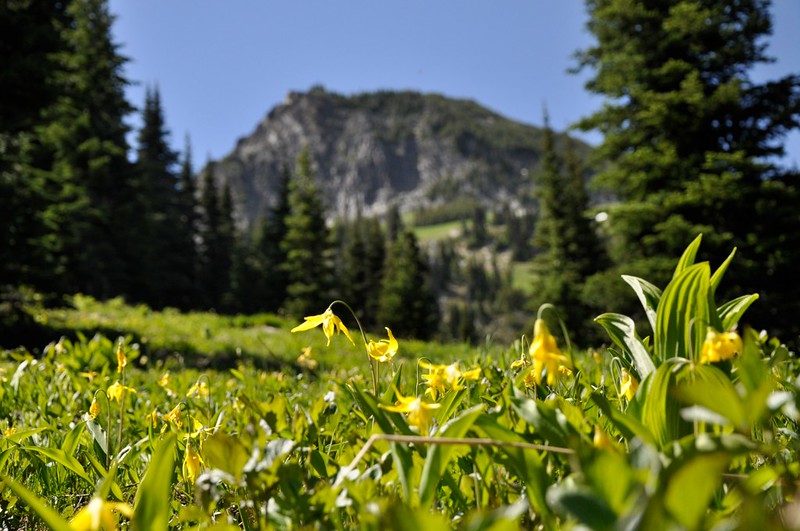
Glacier Basin provides a unique wildflower experience where flowers grow right up to the edges of glacial moraines, creating dramatic contrasts between delicate blooms and raw geological features. The basin’s protected location allows some species to grow larger than they would in more exposed areas, while the constant glacial runoff creates ideal conditions for moisture-loving varieties. Inter Glacier provides a dramatic backdrop for wildflower photography, with the white ice contrasting sharply against colorful meadows. The 6-mile round-trip hike passes through several distinct elevation zones, each supporting different wildflower communities.
Nature’s Enduring Canvas
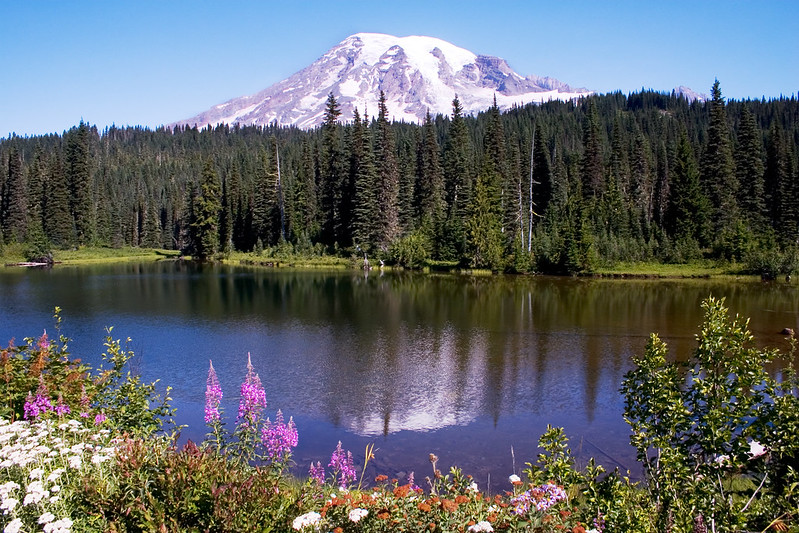
Mount Rainier’s wildflower meadows represent millions of years of evolutionary adaptation, where ancient volcanic soils and glacial processes created the perfect conditions for spectacular alpine displays. These same forces continue shaping the landscape today, ensuring that future generations will witness the same natural artistry that has drawn visitors for over a century. The flowers that bloom each summer are direct descendants of species that survived ice ages and volcanic eruptions, carrying genetic memories of resilience that allow them to thrive in seemingly impossible conditions. Today’s climate changes add new challenges to these ancient rhythms, making each summer’s display both a celebration of natural persistence and a reminder of how precious these mountain ecosystems truly are.
More from Travel Pug

- 20 Best Beach Towns in the Carolinas
- 13 Destinations Where Tourists Regularly Regret Their Trip
- 20 Things You Actually Get in First Class
- 20 Small Airports With Aviation Museums
- 20 Places in the U.S. That Are Perfect for a Reset Trip
Like Travel Pug’s content? Follow us on MSN.
